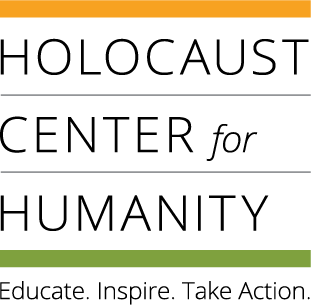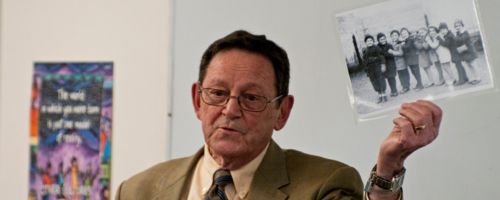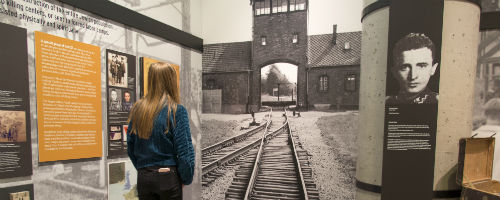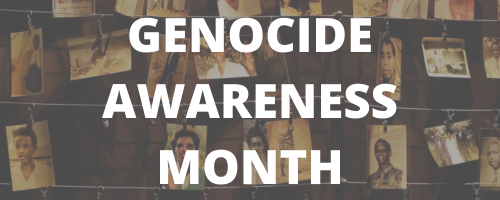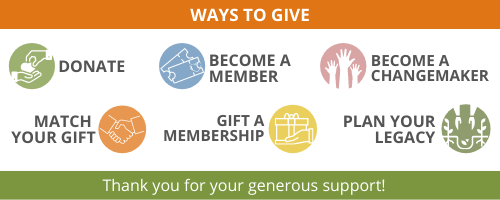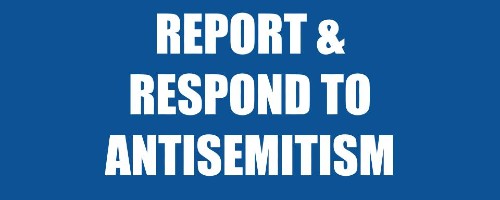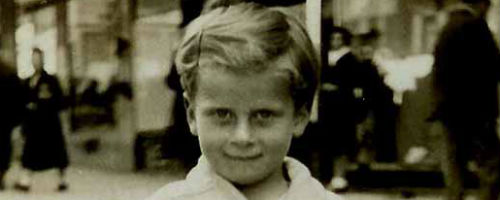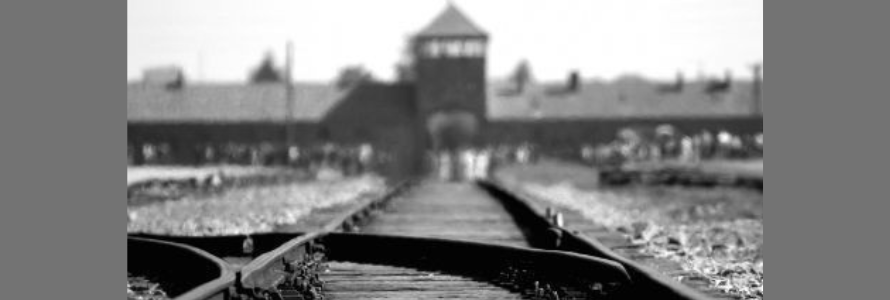
Vienna & Poland Holocaust Tour: July 2-13, 2024
Learning Lessons of the Holocaust through Human Stories
A trip about the meaning of memory and connecting - connecting to history, connecting to people, and understanding that each one of us has the power to make a difference. This trip is open to participants of any race, religion, gender, sexual orientation, ethnicity, or background.
Trip includes:
Vienna and Korneuburg, Austria; Warsaw; Treblinka; Minsk Mazowiecki; Stoczek; Krakow; Holocaust by Bullets: Miechow, Dzialoszyce, Dzieraznia; Auschwitz-Birkenau; meetings with a survivor, rescuer, and dinners and experiences that highlight the culture and history of Vienna and Poland.
"I would definitely recommend this trip to others.The trip gave me much needed moral clarity about what matters in the world, in politics, and in human relations. I feel that history is repeating itself and we have to be vigilant to evolving current events" - Traveler
Registration is now closed
Stay tuned for stories from this summer's trip.
This program was generously funded, in part, by the Claims Conference. Thank You!
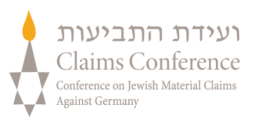
Auschwitz Legacy Fellowship
In 2021, the Auschwitz-Birkenau Memorial Foundation (ABMF) launched the Auschwitz Legacy Fellowship, a fully-funded continuing education program for American high school teachers and their students.
During the Auschwitz Legacy Fellowship, teachers participate in a rigorous six-month online program, followed by a study visit to Poland (Warsaw, Krakow, Auschwitz).
Auschwitz Legacy Fellows come from all 50 states and constitute a wide corps of skilled educators who are integral to the Auschwitz-Birkenau Memorial Foundation’s efforts to share the universal lessons of Auschwitz all over the United States.
Eligibility:
-
The program is available to high school teachers teaching English, history, social studies, or related subjects who have never visited Auschwitz-Birkenau.
-
Participation in the program is free of charge (double occupancy hotel accommodations, meals, and international flights included); upon acceptance, Fellows will be asked to contribute $150 to help offset administrative costs. Those who prefer single occupancy will incur additional costs.
As an Auschwitz Legacy Fellow, you will:
-
Travel to Poland in the summer for a week-long experience, which will include Warsaw, Krakow, and Auschwitz-Birkenau
-
Participate in an educational program that revolves around “Auschwitz Legacy,” a 45-minute educational film about WWII, the Holocaust, and Auschwitz-Birkenau
-
Receive multiple resources for you and your students, with the “Auschwitz Legacy” film at the center of the curriculum; the provided resources will allow you to meet relevant guidelines and standards
-
Gain special access to Auschwitz-Birkenau Museum’s remote guided visits for your students
-
Become a lifelong Auschwitz Legacy alum and learn from and contribute to a community of teachers from all across the U.S. for whom it is essential to address these topics in the classroom
-
Establish a relationship with the Holocaust Center that will give you and your students access to our resources
If you are interested in becoming an Auschwitz Legacy Fellow, you:
- Will be expected to plan to teach in the classroom for at least another five years
- Are available to participate in a year-long program, including a week-long trip to Poland
- Are prepared for an active experience in Poland, which will include a lot of walking and long days
- Can apply by emailing This email address is being protected from spambots. You need JavaScript enabled to view it.
Applications CLOSED for THE 2024 Cohort
Please check back in the spring of 2024 for information on the 2025 cohort.
King 5 News | April 27, 2022
EDMONDS, Wash. — A new exhibition at Cascadia Art Museum in Edmonds showcases the work of holocaust survivor and artist Maria Frank Abrams.
She had a celebrated career including an array of group and solo shows. But like all the artists featured at Cascadia, Abrams’ work eventually disappeared from the mainstream art world.
The museum focuses on neglected or forgotten artists whose work spans the years 1860-1970. Many of them are women and people of color.
"Maria Frank Abrams is a great example of what we do here,” said Sally Ralston, Executive Director of Cascadia. "We are honored to showcase these artists again and bring their art here, and give them the respect their art deserves."
The Reflector | April 18, 2022 | By Sebastian Rubino
Peter Metzelaar, a Holocaust survivor from Amsterdam, shared his story with students at Battle Ground High School during a presentation he gave on April 14.
Metzelaar, who is 86, was born in Amsterdam in 1935. In 1942, when he was 7 years old, the Nazis seized members of his family, who were Jewish. Metzelaar and his mother, Elli, found shelter on a small farm in Mekkinga in northern Holland with the help of Klaas and Roefina Post.
They later moved from place to place in hiding until the war ended in 1945.
“In Holland, it was a very small country, and at that particular time, there were only about 140,000 people of the Jewish faith,” said Metzelaar. “The Nazis took over in May of 1940. By the time it was over in May 1945, of the 140,000 (people), between 75 to 80% were murdered. I don’t even like to use the word killed. They were murdered intentionally.”
FM News 101 KXL | March 16, 2022
Battle Ground, Wash. – Battle Ground High School world history teacher Amanda Fulfer is headed to Poland this July as a part of a program put on by the Holocaust Center for Humanity.
Fulfer tells KXL News “It’s a once in a life time opportunity.”
Fulfer says her background is in East Asian studies, but at the beginning of the pandemic when schools switched to online and changed some of its curriculum, she was told she’d be the only one teaching a brand new European history class and had to figure out how to prepare for it on her own. While prepping she quickly became fascinated by the story of the Holocaust and felt a calling to share those stories from that period to future generations. In Poland she’ll visit Auschwitz Birkenau, the Warsaw Ghetto and Schindler’s factory, saying it will give her a powerful perspective into what she teaches
